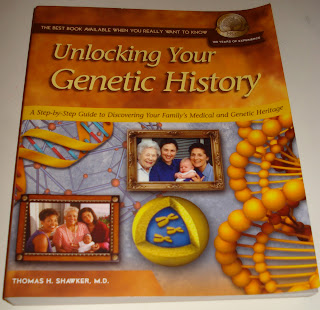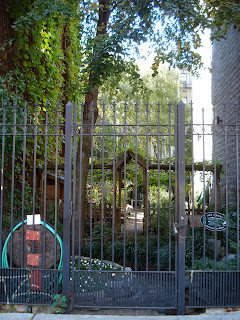Once again we hit the ground running this morning. We started off at 8 a.m. sharp with the Optional Practicum session. Although it is optional most of the attendees show up for this session. We reviewed our work from the day before and were given a new assignment, which will be reviewed tomorrow morning.
The next session was
Forensic Techniques for Genetic Genealogy presented by Debbie Parker Wayne. This was an outstanding session that easily could have stretched into two sessions, or even an entire week. Debbie has a gift of making a potentially complex subject comprehensive to a lay person. She started off with the basics and progressed from there, telling how DNA is used in forensic genealogy.
Michael Ramage presented the next two sessions,
Missing & Unknown Heirs: Law and Procedures for the Forensic Genealogist: Part 1 and Part 2. He discussed the probate process, estates, and trusts. During this discussion he outlined what is important for you as a forensic genealogist to know and what information you need to have for the case you are hired to work on. In particular it was stressed that you must know or be familiar with the laws of the state you are working in. Then you have to be familiar with how the courts want your findings or evidence presented. Apparently some places want the affidavit printed on certain paper, in a particular font, or bound a specific way. Another topic covered is what specifically is your job as the genealogist, and what falls within the responsibilities of the lawyer to handle. All of this is important to know so that you don't find yourself in a sticky situation.
Next, Dee Dee King presented
Preparation, Business Structure, Due Diligence. This session was all about how to prepare yourself to become a professional forensic genealogist, how to manage your business, and what to do before accepting a case. On this last point the message in a nutshell was that you really need to look out for yourself as the professional genealogist before accepting a job, and after you have accepted the job. There are a lot of different players in legal cases and the motivations or personalities of all the parties involved may not be apparent or known in the beginning. My impression is that you need to stay focused on your assignment, stay professional, and stick to your standards. Don't get drawn in by everybody else's drama. To illustrate this last point Tina Sansone shared a case study of an experience she had.
Our last session before dinner was
Adoption Cases: Legal and Ethical Implications presented by Michael Ramage. As the title suggests Michael told about the legal and ethical parts of working on adoption cases. States vary in their disclosure of information pertaining to adoption cases and of course this is important to know when doing this sort of work. It also seems to be the type of work that may require you as the genealogist to also be a little bit psychologist. For obvious reasons this could be a potential mine field of emotions for the parties on both sides. Somebody in class even suggested using a lawyer as a go between in such cases, so that you as the genealogist would not leave yourself open to being sued for emotional duress.
Tonight we all gathered for a pizza party dinner and happy hour. After dinner Pamela Boyer Sayre gave a great presentation on
Techie Stuff for the Forensic Genealogist. Now I've blogged before about my state of being tech challenged, so I was really looking forward to this session. I was not disappointed. Pamela is funny which gave her presentation a light hearted feeling, which I'm sure was also aided by the attendees' happy feeling in the room by the happy hour. Both laughter and information were flowing. My favorite app that she discussed, although it's hard to pick one, was eWallet. This is one that can be useful to everybody regardless of your profession.
Finally, Dee Dee King had a very informal talk in the sitting area of the hotel lobby for those of us interested in Military Repatriation work. For those that don't know, the military is very committed to identifying the heirs of soldier's remains that are found. To do this one has to have a good working knowledge of DNA. The military has all sorts of requirements for you to get this kind of work, it is contracted, and not easy to get.
Dee also took some time to discuss the mentor program of the Council for the Advancement of Forensic Genealogy. She broke down the application process, the different levels, and what happens once you are accepted. The future goals and projects were also discussed. It is an exciting time to get into the field of forensic genealogy and I'm so glad to be apart of this first group of the institute!
Another group was having a discussion on certification with the BCG after Dee's talk. However, by this time (9:30 p.m.) I was exhausted. I also know that tomorrow is another full day. Our sessions start at 8:00 a.m. again and end at noon. Then most of us are heading home to various parts of the country. Time to pack and get some rest!














